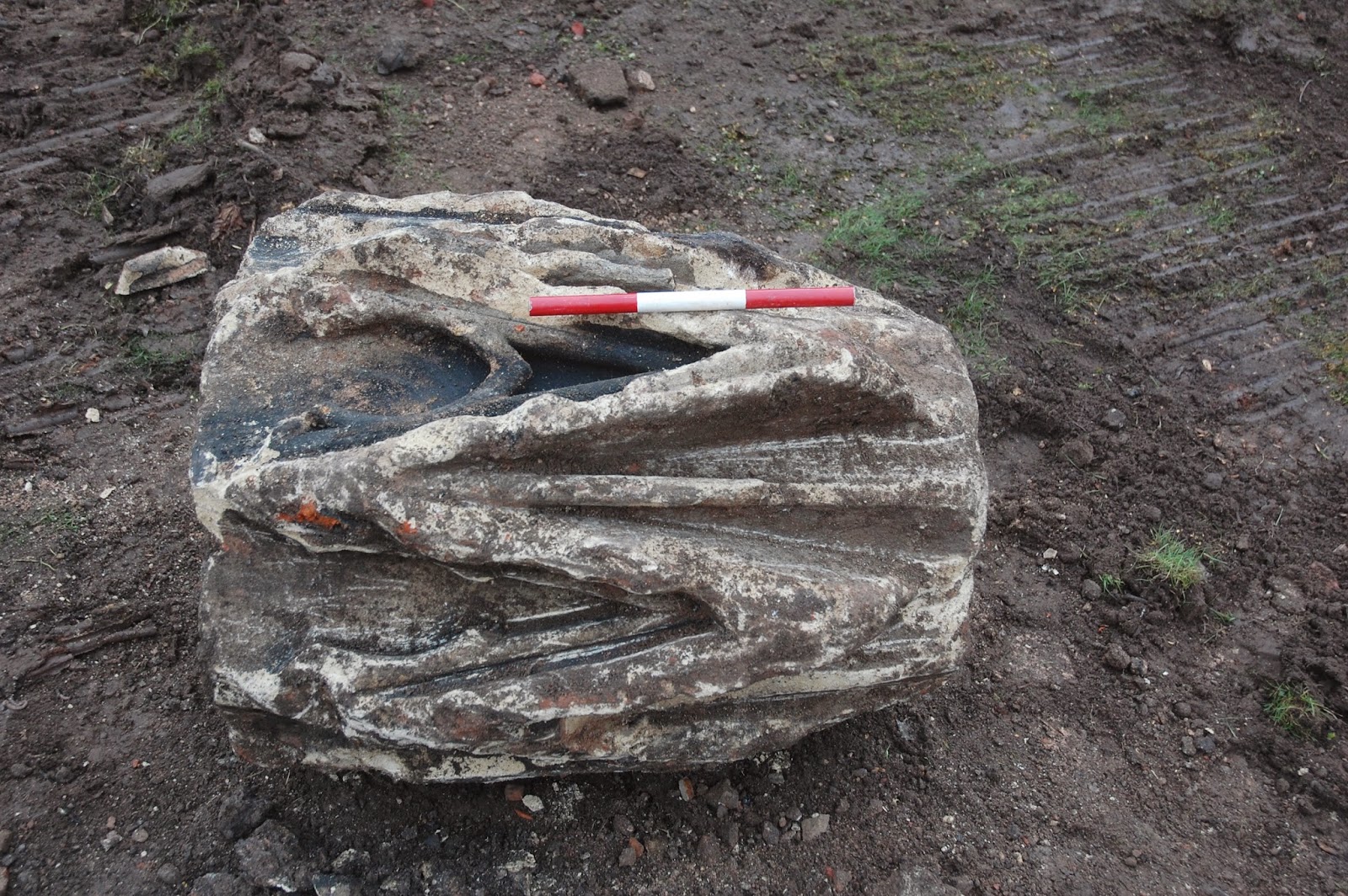This
amazing bit of masonry was discovered on site in backfill. It is well made so
we wondered where it would have come from. Then an eagle eyed archaeologist thought they had seen it before and went back to
have a look at one of the photos used in the preparation for the dig, and
realised that it came from St Michael's, or is suspiciously similar. However
the spot where it was uncovered was on the other side of the Lich St and a
little way up, and this masonry had been on the College St side, so it had
obviously travelled, after the church was demolished.
St
Michael's was just to the south east of the excavation area under the road. This is the second St Michael's, the first having stood next to
the cathedral. The main body of the church, which fronted College Street, lies
under the road so we don't expect to uncover the church itself, although we have come up against an adjoining cellar wall.
This
church replaced the medieval St Michael's in
the 1840s. We have a poster from 1839 which invited people to donate towards
the rebuilding, which is said was necessary
due to the dilapidated state of the present church. The closeness to the
cathedral is because it served as parish church to the immediate area and was
the cemetery chapel, but it was decided to relocate the site in order to
provide a better view of the Cathedral. We also have some specifications for
the workmen involved in building the new church, such as carpenters, smiths and
plasterers.
It
was always a small parish as it only served the immediate vicinity of the
cathedral, with other churches serving the rest of the city centre. In fact the
northern side of the street was part of St
Helen's. The 1851 Religious census, which compiled attendance figures from all
places of worship, gave the population of the parish as 564, much smaller than
the other city parishes, and attendance was under 100 for morning and evening
services, much smaller than St Helen's and other nearby churches. A comment in
the census stated that there was no Sunday School as there were only five or
six poor families in the parish. The Church closed and became the Diocesan
Registry in 1910, and was later demolished with the rest of Lich St in the
1960s. Some of the memorials went to St Helen's on the High Street, now part of
All Saints parish.
Like
many churches, St Michael's would have played an important part in the lives of
the residents of Lich Street, not just on Sundays, but baptisms, marriages,
burials, poor law administration, communal activities and charitable giving.
The accounts of the St Michael's Charity are also in the archives, and it is
noticeable that one of the trustees was Mr Arthur O. Mainwaring, who was also a
grocer at No.1 & 3 (later renumbered 5) Lich St.
Parish
records for St Michael's can be accessed through Worcestershire Archive &
Archaeology Service in The Hive.




No comments:
Post a Comment